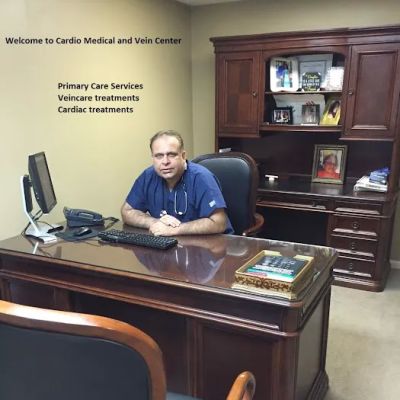Understanding the Stages of Heart Disease: A Deep Dive into the Progression of Heart Health
- 1. The Stages of Heart Disease: An Overview
- 2. Recognizing the Early Stages of Heart Disease
- 3. The Intermediate Stages: How Heart Disease Progresses
- 4. Advanced Stages: Severe Heart Disease and Its Impact
- 5. Treatment Options: How to Manage and Reverse the Effects
- 6. Real-Life Case Study: The Journey Through the Stages of Heart Disease
1. The Stages of Heart Disease: An Overview
Heart disease, often referred to as cardiovascular disease, is a term used to describe various conditions that affect the heart. It is important to understand that heart disease does not develop overnight. Instead, it progresses in stages, which means that early intervention can make a significant difference in preventing further complications. Over the years, I’ve personally learned the importance of recognizing the signs and symptoms of each stage to improve heart health and prevent more severe outcomes.
Heart disease develops in stages, ranging from early signs that may be subtle to more advanced symptoms that significantly impact daily life. Understanding these stages can help individuals take proactive steps to manage their health. Whether it’s adopting healthier habits, seeking medical advice, or opting for treatments, knowing where you are in the progression of heart disease is key to better outcomes. Let’s break down these stages and how to identify them.
2. Recognizing the Early Stages of Heart Disease
The first stage of heart disease is often the most subtle, making it easy to overlook. In the early stages, individuals may not experience severe symptoms, which is why heart disease can go undiagnosed for a long period. For example, I’ve heard many stories of individuals who didn’t realize they had early signs of heart disease until they underwent routine check-ups or felt symptoms like chest discomfort or shortness of breath during physical activities.
Some common early signs include:
- Chest pain or discomfort: Often described as tightness or pressure in the chest, it’s a common early warning sign of heart disease. The pain might come and go, particularly during physical exertion or stress.
- Shortness of breath: Difficulty catching your breath during normal physical activity or even at rest could indicate an underlying heart issue.
- Fatigue: Feeling unusually tired or weak, especially after physical exertion, can also be an early sign of heart disease. This is because your heart might not be pumping effectively enough to supply adequate oxygen to your muscles and organs.
If you experience any of these symptoms, it’s essential to consult a healthcare professional for a thorough evaluation. Early detection can help prevent the disease from advancing to later stages, potentially reducing the risk of more serious complications.
3. The Intermediate Stages: How Heart Disease Progresses
As heart disease progresses, the symptoms typically become more pronounced. In this stage, the heart becomes less efficient at pumping blood, which can lead to increased symptoms and a decline in overall health. I’ve witnessed firsthand how intermediate stages of heart disease affect not just physical health but also emotional well-being, as individuals often struggle with their changing lifestyles.
In the intermediate stages, individuals may begin to experience:
- Frequent chest pain or angina: The pain may occur more often, even with minimal physical exertion. This is due to reduced blood flow to the heart muscle, and it often requires medical intervention to manage.
- Swelling in the legs, ankles, or feet: As the heart’s ability to pump blood diminishes, fluid may accumulate in the lower extremities, leading to swelling. This is a sign that the heart is not effectively circulating blood throughout the body.
- Difficulty exercising or performing daily tasks: As the heart’s pumping ability decreases, individuals may find it harder to engage in activities they once enjoyed, including light exercise or even walking up stairs.
If these symptoms begin to surface, it's crucial to see a doctor promptly. Treatment at this stage may include lifestyle changes, medication, or interventions to reduce the strain on the heart and slow the progression of the disease.
4. Advanced Stages: Severe Heart Disease and Its Impact
In the final stage of heart disease, the heart’s ability to function becomes severely compromised. This stage is marked by serious symptoms that significantly impact daily life and overall health. Unfortunately, I’ve known individuals who reached this stage before seeking medical attention, resulting in much more severe health complications, including heart failure, arrhythmias, and even death.
The advanced stages of heart disease can involve:
- Severe chest pain: Chest pain may become constant and intense, requiring emergency medical attention. This could indicate a heart attack or severe coronary artery disease.
- Severe shortness of breath: Individuals may experience shortness of breath even while resting or lying down, a sign of heart failure or a significant reduction in heart function.
- Loss of consciousness: In some cases, people with severe heart disease may faint or lose consciousness due to inadequate blood flow to the brain.
At this stage, medical intervention is necessary, and it may involve surgeries such as bypass surgery, stent placements, or even heart transplants, depending on the severity of the disease. Immediate medical attention is critical to preventing further complications.
5. Treatment Options: How to Manage and Reverse the Effects
The treatment options for heart disease vary depending on the stage of the disease, the severity of symptoms, and the individual’s overall health. The earlier the disease is diagnosed, the more treatment options there are available. I’ve seen patients benefit from a combination of lifestyle changes, medication, and medical procedures, which can significantly improve their quality of life and reduce the risks associated with heart disease.
For those in the early stages, treatment often involves:
- Lifestyle changes: Adopting a heart-healthy diet, regular exercise, and stress management techniques can help slow down the progression of heart disease.
- Medications: Statins, blood pressure medications, and blood thinners are commonly prescribed to control cholesterol levels, manage blood pressure, and reduce the risk of blood clots.
In the intermediate and advanced stages, medical procedures or surgeries may be required, such as:
- Angioplasty and stent placement: These procedures can help open blocked arteries and improve blood flow to the heart.
- Bypass surgery: In more severe cases, bypass surgery may be necessary to reroute blood flow around blocked arteries.
- Heart transplant: For individuals with severe heart failure, a heart transplant may be the only option.
The goal of treatment is to manage symptoms, prevent the disease from progressing, and improve overall heart function. Consulting with a cardiologist is crucial to develop a treatment plan tailored to the individual’s needs.
6. Real-Life Case Study: The Journey Through the Stages of Heart Disease
Let me share a real-life example of someone who went through the stages of heart disease. John, a 58-year-old man, was diagnosed with heart disease in its early stages after experiencing occasional chest pain and shortness of breath. After making lifestyle changes, including adopting a low-sodium diet and starting a regular exercise program, he managed to stabilize his condition.
However, years later, John’s condition worsened, and he began to experience swelling in his legs and severe chest pain. At this point, his doctor recommended angioplasty and stent placement, which helped restore blood flow to his heart. Although his condition has improved significantly, John continues to monitor his heart health closely to prevent further complications.
John’s story is a reminder that heart disease can progress through different stages, but early diagnosis and proactive treatment can make a significant difference in managing the disease and improving quality of life.




















